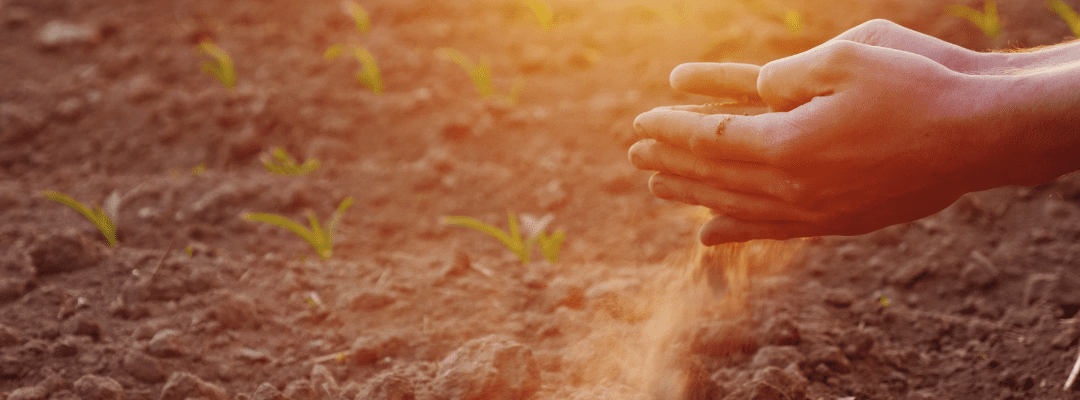While it was more than 50 years ago that Charles Krone dubbed “regenerative” as terminology for improving the ag ecosystem, it has started to become more mainstream as more growers, land owners, and agricultural organizations look to the future health of farmland across the world.
However, regenerative ag isn’t a new concept – Indigenous Americans have practiced many of what’s considered part of regenerative ag today; from intercropping to water management principles to agroforestry.
Even so, it has started to gain significant traction in the past decade; particularly as more technologies crop up to support the practice and other sustainability initiatives.
What is Regenerative Ag?
As we think about regenerative ag in today’s practice of agriculture, it comes down to a simple concept: focusing on the maximizing resources to support the connectedness of agriculture. This often starts at the core of the ecosystem for ag: the soil.
Filled with living organisms, soil serves as the core of what gives life to plants and makes crops grow. But, soil health goes beyond the common practice of rotating crops to ensure nutrients can replenish. Regenerative ag focuses on how the entire environment can contribute to better soil; and thus, a better yield for crops.
Regenerative ag can be explained best by digging into the core principles. These most commonly include:
- Minimize or eliminate tillage, which is focused on eliminating disturbance from the soil in its natural state
- Protect the soil by covering or giving the soil surface some “armor” so it isn’t as impacted by erosion
- Keeping plants rooted in the soil as long as possible to help support the natural ecosystem of the soil
- Biodiversity, such as intercropping or crop rotation
- Integrate livestock, or using animals for grazing and recycling nutrients
The Core of It: Soil Health
Soil health sits at the core of the discussion; and anyone in agriculture can agree that soil health remains one of the most important factors for the future success of farming.
Studies have shown that bigger yields come from healthier soils; and as we look at the world’s needs to increase food productivity with the finite amount of farmland that we have available to us, understanding how to maximize our soils and their performance will become paramount.
While much of the focus in the industry narrows in on monitoring and managing p and k levels, it goes beyond that. Soil health requires a focus in some other areas, much of which is addressed via regenerative ag practices.
For one, it starts by understanding how soil uses the water available. Seeing hydrology flows and understanding how elevation contributes to where rain and snowmelt travel before being absorbed can provide insight into soil structure.
There are structures within the land that may make soil less conducive to providing the stability and support that crops need to grow; and in these areas, it may be more beneficial to practice variable-rate planting. Even if this part of the land isn’t well suited for crop production, it may work well to sustain other types of life – which contributes to the overall biodiversity in the soil.
That’s a good start to managing soil fertility, but it also requires an understanding of the microbe ecosystem and how that contributes to plant health. In recent years, the agricultural industry has seen a transformation in this space with more companies focused on using technology to understand, manage, and improve soil health.
Technology and Soil Health
Measuring soil health traditionally uses wet chemistry practices or submitting soil and tissue samples to a lab. This is resource intensive – not only is it costly, but it takes a great deal of time. Getting timely results can be challenging, which means that there is a narrow window to leverage the data to support in-season decisions.
High-quality aerial imagery, captured via ag drone systems, has advanced greatly in recent years that has turned it into an option for managing soil health and analysis. While aerial imagery doesn’t get into the details of what’s happening two, six, or ten feet into the ground, it can provide an indication of how plants are performing – and this information can provide excellent insight into how this performance may relate back to soil health and fertility.
Using remote sensing techniques like high-resolution aerial imagery, new methods of agronomic modeling – or using machine learning to identify how several variables contribute to the overall outcome – can provide even deeper insight into how soils may be performing, either within a season or even comparatively over a period of time.
In doing so, this opens a door to a new world of understanding new technologies and strategies contribute to soil health. It begins to tell the story of crop health and performance by going beyond stalks – and focusing at the root of the matter.
So, Does Regenerative Ag Work?
Regenerative ag has become quite controversial in the agricultural world, with some strong proponents (and those that cast a doubtful eye). What we do know is that the core of crop health and performance starts at the root of it all – the soil.
And, soil health and fertility has become a hot topic in agriculture – particularly as we look at the global need to serve our growing population.
While there are still some questions whether regenerative ag works, it’s clear that focusing on how we can improve and better manage the health of our soils does make a difference. There have been some technological advances in our industry to support this – with some helping to augment soil fertility and health at its core, and others designed to improve data collection and analysis.
Leveraging this technology can ensure that our soil health and fertility continues to produce the crops required for our growing world; while keeping supporting the delicate environmental ecosystem that it supports.


